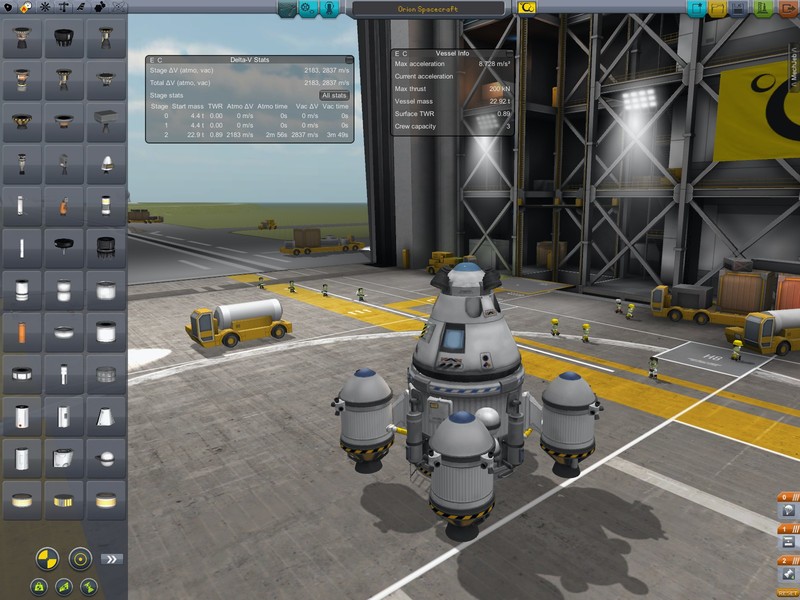The Orion Mission
Trip to Minmus with the new Orion spacecraft
After the three Apollo missions to the Mun were completed successfully, the Kerbal Space Program was ready to continue its ambitious programme of interplanetary exploration.
The next step required either adapting the Apollo spacecraft or designing a new one specifically for interplanetary distances. However, it was deemed that the "two-kerbal land while one remains in orbit" approach was not too popular with public opinion because "hey, it sucks that one of the guys has to remain in orbit while the others get all the glory". So the engineers went back to the drawing board to design a new spacecraft that could land all three kerbonauts.
At the same time, engineers achieved a technical milestone with the development of the LV-N Atomic Rocket Engine: a low-thrust but high-efficiency engine that was perfect for long interplanetary travel.
And so the Orion Spacecraft was born.
The new spacecraft design is based on two independent components. The first, the Orion Spacecraft proper, is a 3-kerbal spacecraft which simultaneously functions as a command center and living quarters, a versatile lander capable of landing on various celestial bodies, and a detachable shielded capsule for final Kerbin reentry.
The second component, the Orion Interplanetary Stage (IPS), is an interplanetary booster sporting from one to several (three in the case of the Orion Mission) of the new high-efficiency LV-N engines, and capable of pushing the Orion to interplanetary destinations.
Both components were designed with modularity and expansibility in mind, so that missions to different targets of the solar system could be undertaken with the same basic spacecraft design, simply adjusting the number of modular fuel units.
Mated inline, the Orion Spacecraft and IPS could be launched in their final cruise configuration, so no docking operations were needed to prepare them for interplanetary injection. They would be launched as a single unit and undock only until the Orion was ready to descend to its target.
The Orion spacecraft/lander itself is considerably heavier than the Apollo lander, but has four times as much thrust. It is at the same time a command craft, an interplanetary lander and a reentry pod. With its standard fuel tank, its delta-v ascends to 2837 m/s — more than enough to land and takeoff on several celestial bodies of the solar system, including the Mun, Minmus and possibly Duna.
The Orion was tested extensively on the surface of Kerbin by its future crew: the space legends Jebediah, Bill and Bob, who were back from an extended stay on board Space Station One and ready for interplanetary journeys.
Continue to The Mission ...




